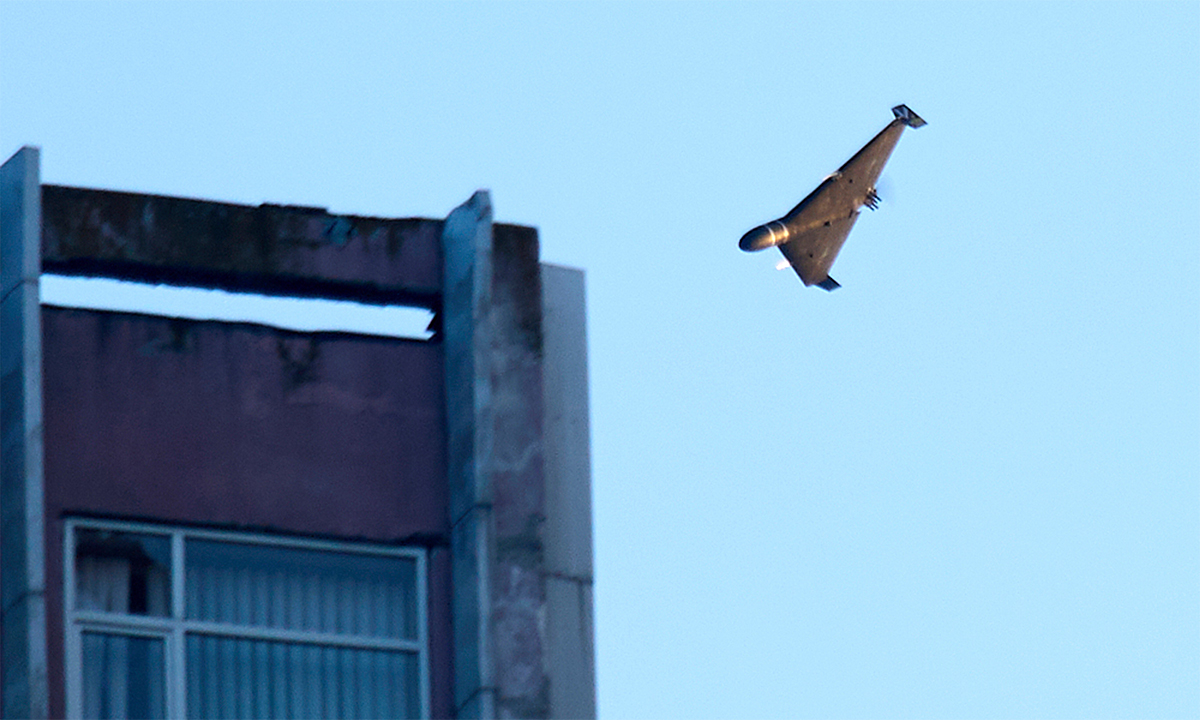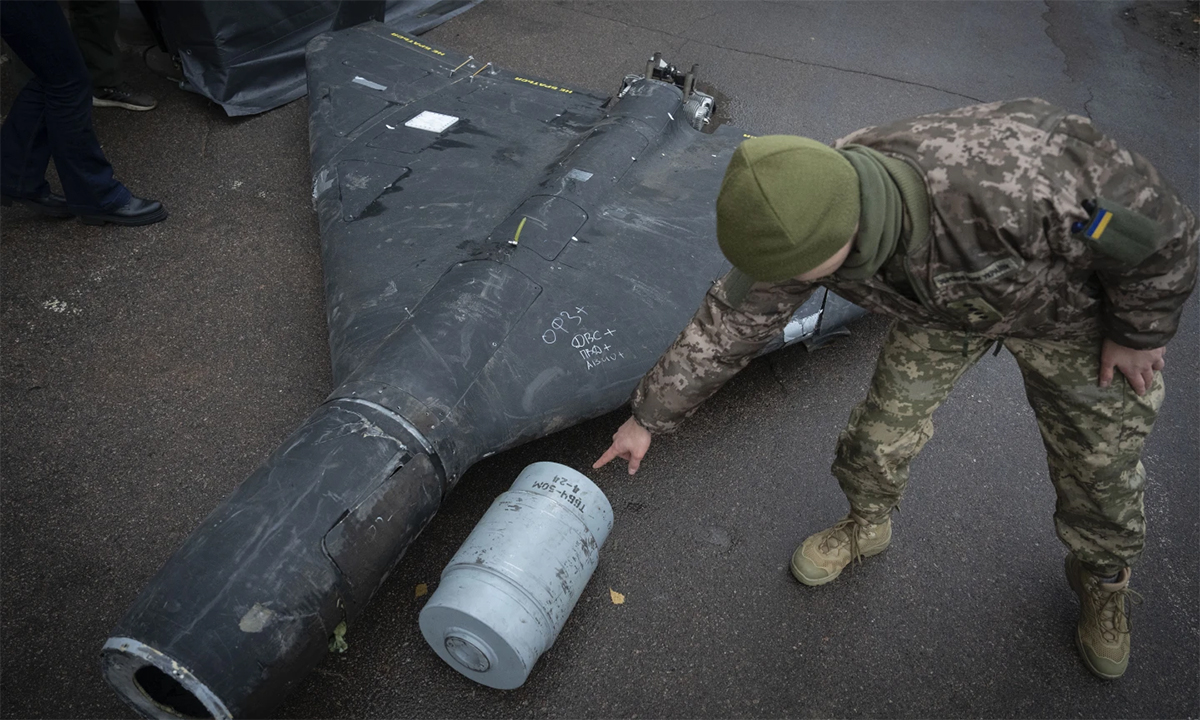Oleksiy, deputy commander of a mobile air defense unit in Kyiv, stated on 16/7 that Russia has been equipping Geran-2 suicide drones with thermobaric warheads. "Along with control improvements, they've increased the warhead weight from 40 kg to 90 kg, significantly boosting the drone's destructive power," he said.
According to Oleksiy, Geran-2 drones with thermobaric warheads have been used in attacks against Ukraine since late last year. However, his unit, equipped only with truck-mounted machine guns, has yet to shoot down one of these larger thermobaric UAVs.
Upon reaching the target, a thermobaric warhead's primary charge disperses a cloud of flammable fuel. A secondary charge then detonates the cloud, creating a massive fireball, shockwave, and vacuum that sucks the oxygen from the surrounding area. This mechanism makes thermobaric weapons particularly devastating in enclosed spaces like buildings or trenches.
 |
A Russian Geran-2 UAV approaches a target in Kyiv on 17/6. Photo: AP |
A Russian Geran-2 UAV approaches a target in Kyiv on 17/6. Photo: AP
A Ukrainian State Emergency Service official confirmed the devastating power of thermobaric warheads, stating they cause considerably more casualties than conventional explosives. Russia's increased use of these weapons, capable of incinerating everything in the affected area, is a concerning development.
Oleksiy added that the Geran-2's thermobaric warhead can destroy anything from small houses to high-rise buildings. Since the conflict began, Russia has used thermobaric rocket launchers like the TOS-1A and TOS-2 against Ukrainian targets. However, their limited range (typically under 15 km) exposes their crews to counter-battery fire and Ukrainian drones.
Kateryna Stepanenko, an expert at the Institute for the Study of War (ISW), noted that Russia is using these drones to target not only rear areas but also front-line positions, constantly adapting its tactics. "Equipping inexpensive UAVs with thermobaric warheads allows Russia to increase attack frequency without risking manned systems like the TOS-1A. They are also improving the accuracy of these thermobaric drones," Stepanenko said.
 |
Ukrainian soldiers stand next to the wreckage of a Geran drone with a thermobaric warhead in 11/2024. Photo: AP |
Ukrainian soldiers stand next to the wreckage of a Geran drone with a thermobaric warhead in 11/2024. Photo: AP
On 8/7, the Ukrainian military claimed an attack on the Krasnozavodsky chemical plant in Moscow province, alleging it produces pyrotechnics and munitions, including thermobaric warheads for Russia's long-range UAVs. This action appears to be an attempt by Kyiv to counter the threat posed by the Geran-2 drones.
The Geran-2 is a Russian-made drone based on the Iranian Shahed-136 design. The initial version weighs approximately 200 kg, carries a 50 kg warhead, and has a range of 2,500 km. Frontelligence Insight, a Ukrainian intelligence analysis group, estimates Russia produced over 60 Geran-2 long-range suicide drones per day (nearly 1,850 per month) between February and April.
The ISW assessed on 8/7 that increased production of these long-range UAVs allows Russia to deploy more drones for daily attacks on Ukraine. This development also enables Russia to use Geran-2s for front-line attacks, rather than solely targeting infrastructure deep within Ukrainian territory.
Nguyen Tien (According to Business Insider, AFP, AP)












